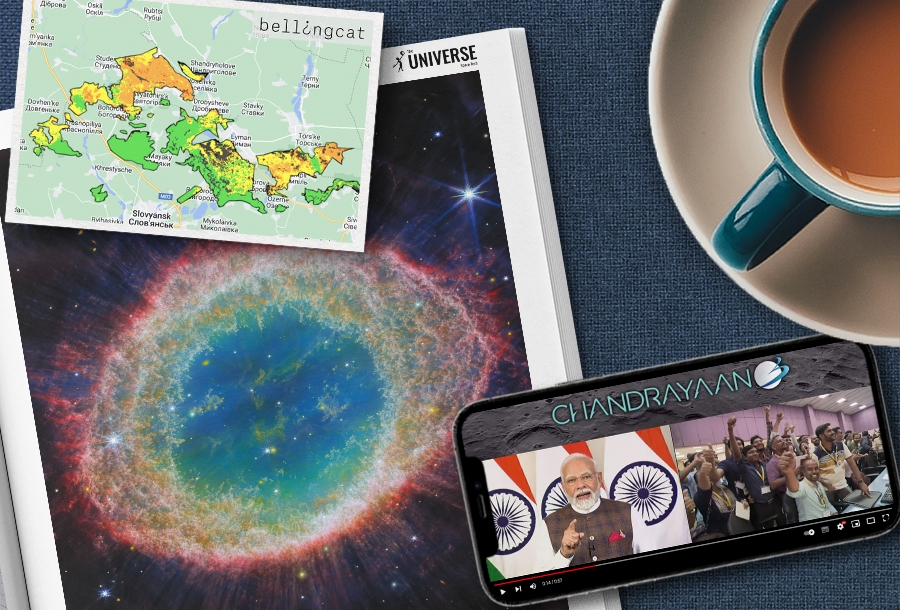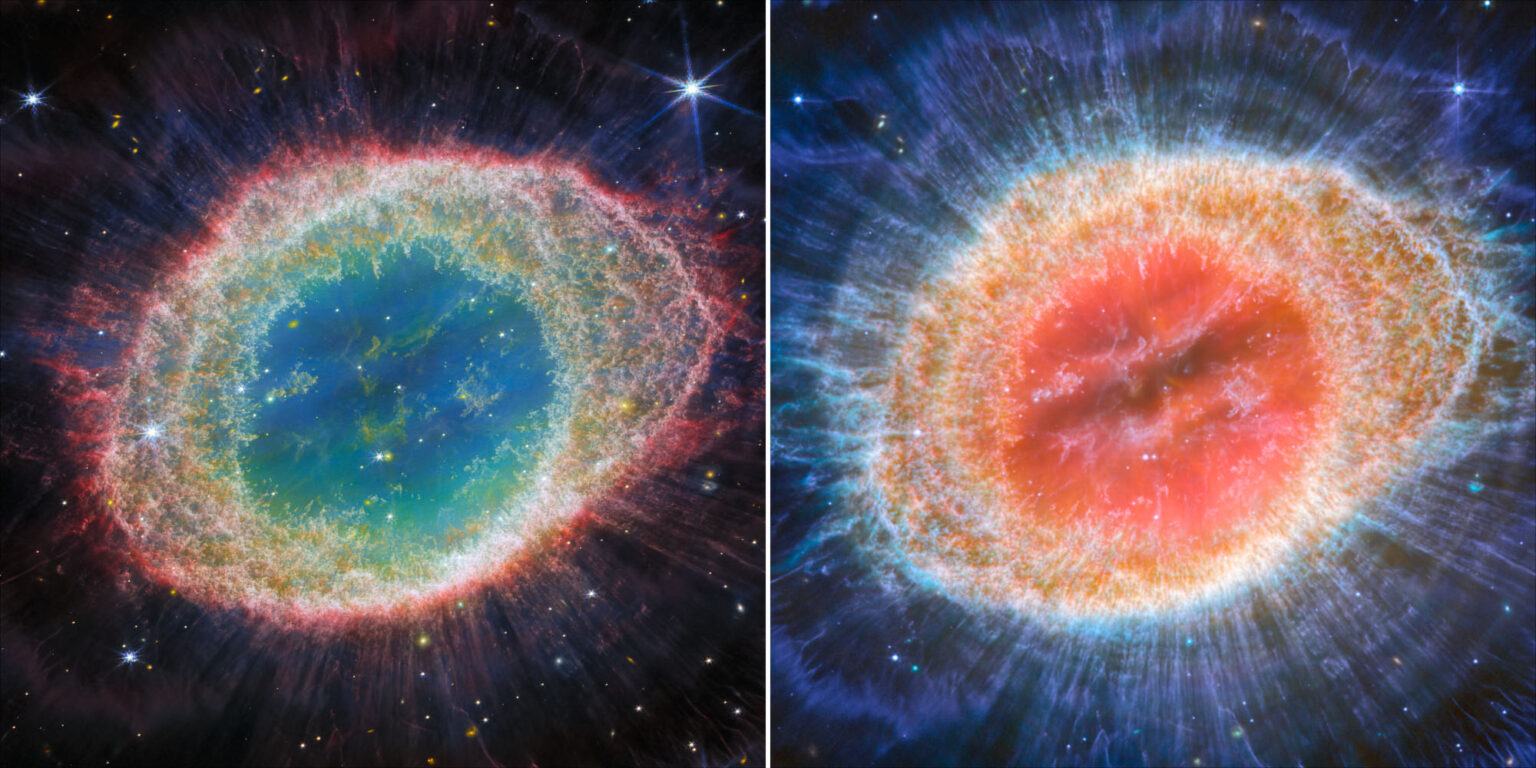Selection of the most interesting space news for the week: American engineers proposed using flying trains to transport cargo on the Moon; NASA installed the instrument on the probe to search for water on the moon of our planet, and we are talking about a Ukrainian who proposed to create the world’s first computer network.

“The world needs to be changed, otherwise it will start to change us in an uncontrolled way” ― Stanislaw Lem
China’s rover reveals structures hidden beneath the moon’s surface
The Chinese rover Yutu-2, which is part of the Chang’e-4 mission, continues to explore the far side of the Moon. Recently, scientists have published a map of structures located at a depth of up to 300 m. They indicate that the magmatic activity on our moon is gradually fading away. They were formed by lava that seeped to the surface and solidified. Interestingly, it lasted hundreds of millions of years, and gradually the layers became thinner and thinner. This indicates that the lava was seeping more and more slowly until it stopped coming to the surface at all.
But as to when exactly this happened, scientists have no idea. The moon was formed 4.51 billion years ago. After that, large asteroids continued to collide with it for another 200 million years. And only then the magma on its surface and in the depths began to gradually solidify.
Chandrayaan-3 successfully landed on the Moon
On August 23, the Chandrayaan-3 spacecraft made a soft landing on the Moon. India has become the fourth country in history to achieve such success. Chandrayaan-3 was launched on July 14. After a series of maneuvers, the spacecraft entered orbit around the Moon. On August 17, the descent platform separated from it. After that, it made a series of course corrections that were required for its landing. After completing the equipment checks, Chandrayaan-3 will begin its scientific program. The descent platform is equipped with instruments designed to study the thermal characteristics of the lunar regolith, the properties of near-surface plasma and seismic activity. Also on board is a corner reflector, which allows for high-precision measurements of the distance to the Moon.
Another important cargo of Chandrayaan-3 is a 26-kilogram lunar rover. It carries instruments designed to determine the mineralogical composition of the lunar surface. It is expected that in the near future the lunar rover will leave the platform and begin to study the surrounding area.
Flying trains will transport cargo on the Moon
The engineers proposed using maglevs to transport cargo on the Moon. These flying trains can move thanks to the repulsive force of magnets. The developers say that there are no problems with the power supply. The effect of magnetic levitation is based on the repulsion of the same poles of magnets. It is even easier to implement it on the Moon than on Earth. A special feature of the FLOAT project will be a special design of tracks that will allow cars to levitate.
The track over which the lunar trains will levitate consists of two main and one additional element. The first of them will be a layer of graphite coating that will support the cart at a height about twice as high as the snowdrifts of lunar dust rise around them. Thanks to this, it will be possible not to lift it into the air. The second mandatory element will be a system of electric circuits that will create magnetic fields to drive trains. The third optional element is a track of solar panels that will stretch along the paths over which the carriages will fly. One of the main advantages of the FLOAT project is that all the elements of the system will be made of flexible materials, so that they can be brought to the Moon in the form of rolls and deployed where they are needed.
NASA probe receives instrument to search for water on the Moon
Lockheed Martin specialists installed the LTM (Lunar Thermal Mapper) instrument on the Lunar Trailblazer probe. It is a 200-kilogram spacecraft, which main task will be the search and mapping of water ice deposits on the Moon, as well as determining the mineralogical composition of its surface. The construction of the Lunar Trailblazer has already reached the finish line. Recently, JPL engineers installed the LTM instrument on the spacecraft.It was provided by the UK Space Agency. The instrument will carry out high-precision measurements of the temperature of the lunar surface. The analysis of these data will allow scientists to determine its properties and composition.
What the war did to Ukrainian forests: Satellite data
The researcher used open satellite data to establish what damage Russia’s invasion caused to Ukrainian forests. Researchers from all over the world continue to study the damage caused to Ukraine by Russia’s large-scale invasion. A study by OSINT reporter Christopher Giles, published recently on the Bellingcat website, is devoted to their condition.
Svyati Hory National Park and the forests that surround it. This environmental protection facility is located in the north of Donetsk region along the Siverskyi Donets river. The nearest major settlements are Slovyansk and Lyman. And fierce battles were fought for this territory throughout the spring and summer. This area is characterized by a complex landscape, because limestone deposits come to the surface here, which form fairly high and steep hills, where the river forms entire canyons. To investigate how these protected areas were affected by the war, Giles compared data from June 1 to September 20, 2021, with the same period in 2022. The result shows minor changes during this period in the Donets floodplain, but quite large in the national park. This is in good agreement with the numerous reports of fires as a result of shelling that were received in May 2022.
Kinburn Spit is an elongated peninsula in the Kherson oblast that separates the Dnieper Estuary from Mykolaiv. It is of great importance both from the point of view of military strategy and from the point of view of the ecology of the Black Sea region. Giles applied the same technique to it. Satellite data showed that most of the spit’s territory remained rather poorly damaged, although in some areas the damage was catastrophic.
Photo of the week

The Ring Nebula is a typical representative of planetary nebulae located at a distance of about 2500 light-years in the constellation Lyra. This object, also known as Messier 57, M57 or NGC 6720, was discovered by French astronomers Antoine Darquier de Pellepoix and Charles Messier in 1779. Two astronomers stumbled upon the Ring Nebula when they were trying to study the path of comet Bode, which flew very close to it, moving through the sky. On August 21, 2023, scientists announced that the James Webb Space Telescope had once again achieved success, obtaining an incredibly detailed photo of the iconic cosmic halo.
Interesting figure — 100 million km/h
According to new research, black holes can fly apart in space at an incredible speed that approaches 10% of the speed of light. According to scientists, after an energetic collision of two black holes, the new object accelerates to a speed of about 28,562 km/s, which is more than 100 million km/h. The new discovery of the motion of black holes at such a high speed goes beyond previous theories and calculations. Previously, it was believed that the maximum speed for these objects could be a speed of 5000 km/s.
Something to read on the weekend

Can paper bureaucracy be completely eliminated so that all state functions provided solely in electronic form? This question sounds absolutely modern, but it was first posed by the founder of the Institute of Cybernetics of the National Academy of Sciences of Ukraine, Viktor Glushkov. As early as 1962, he proposed creating the world’s first computer network that would connect tens of thousands of machines.
As of 2023, over 80 countries around the world have had their own satellites in Earth’s orbit. However, not all of them belong to the exclusive club of nations capable of launching payloads into space on their own. This club, whose members are able to independently launch payloads into space (requiring their own launch vehicle and spaceport), includes only a select few countries. At present this club consists of eight countries, the European Space Agency, and several private companies. Meanwhile one Southern Hemisphere country once had a really good chance to enter into that list too. Mykyta Lytvynov talks about how the Alcântara disaster prevented Brazil from becoming a space power.
Follow us on Twitter to get the most interesting space news in time
https://twitter.com/ust_magazine

